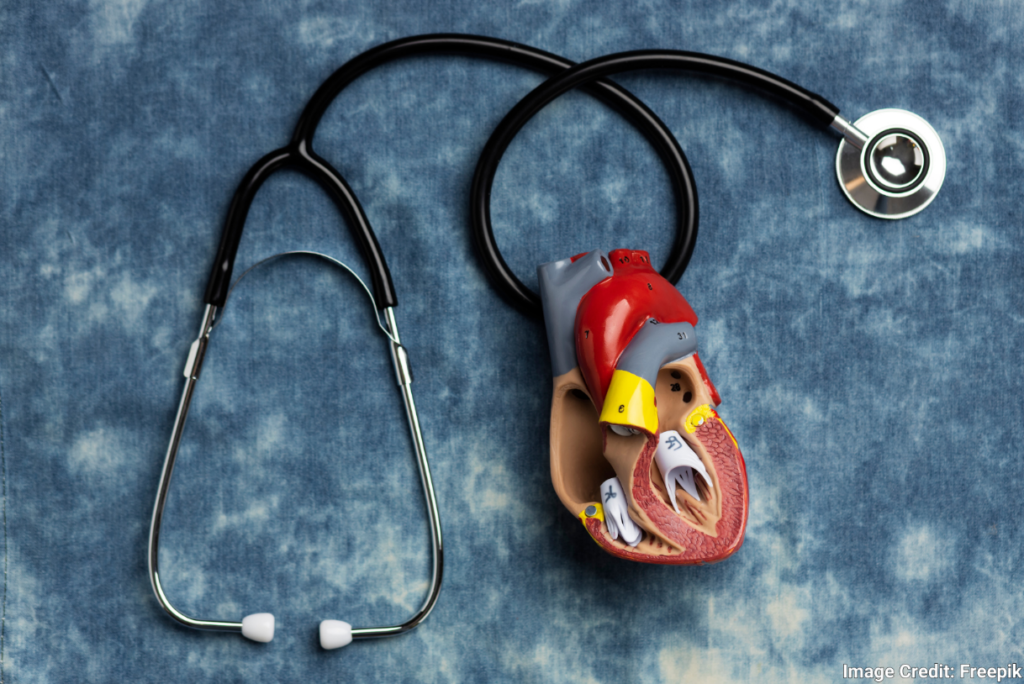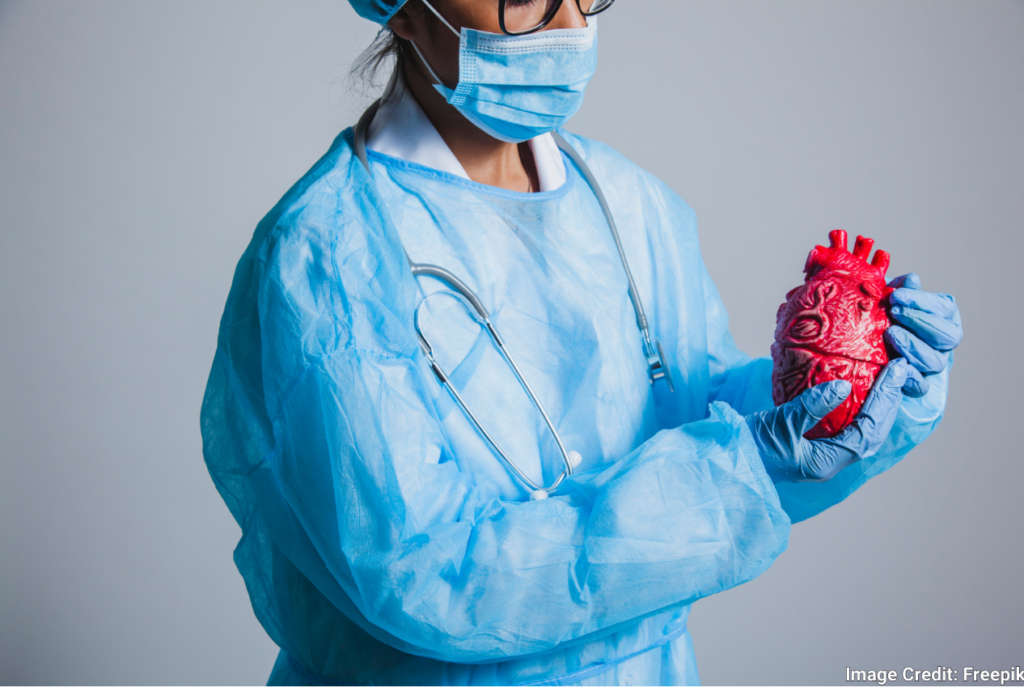Weekly update
Weekly Newsletter
Excepteur sint occaecat cupidatat non proident
FROM SYMPTOMS TO SOLUTIONS: MANAGING CARDIOVASCULAR ILLNESS

Imagine your heart as a perfectly tuned vehicle engine, working tirelessly to power every part of your body. Now, imagine what if the engine that is fuelling such growth starts to splutter, slow, or even fail in the most unexpected of ways? Cardiovascular diseases (CVDs) are the silent predators of the highway of life which gradually slows down the car until the obstacles are too difficult to be blinded. These diseases do not often come as a surprise. However, they may arrive without being warmly welcomed: They can manifest themselves as fatigue and shortness of breath, as well as life-altering dramatic events such as heart attacks.
Cardiovascular diseases (CVDs) encompass various ailments that impact the heart and the blood vessels. These diseases which include coronary artery diseases, heart failure, arrhythmia, and among others are the main causes of death, with millions of people across the globe being affected annually. Information on the medical correlates linked with cardiovascular diseases would make patients understand the symptoms of the diseases, go for early treatment, and prevent potential precursors.
What Are Cardiovascular Diseases?
CVDs encompass a broad spectrum of conditions, including:
- Coronary artery disease (CAD)- CAD forms when the blood vessels supplying blood to the heart are blocked, typically by plaque, or narrowed.
- Heart attack- A heart attack is a condition in which there is a partial, or more damaging total, blockage of blood flow to part of the heart muscle.
- Stroke- A stroke is a condition where blood flow to the brain becomes either severely obstructed or stops completely leading to a traumatic effect on brain cells.
- Heart failure- A heart failure occurs when the heart is unable to pump enough blood to provide perfusion to all organs.
- Arrhythmias- Arrhythmias are changes in heart rhythms such as palpitations, dizziness, or fainting.

So, how do we know whether we have a Cardiovascular Disease?
Cardiovascular diseases can appear differently depending on the seriousness of the problem and its progression. Recognizing the signs of cardiovascular disease is important for timely discovery and treatment. Some of the more common heart issue symptoms include:
- Chest Pain (Angina)- This usually presents as pressure or squeezing, but other terms may be used, such as Angina Chest pain which can indicate coronary artery disease symptoms, especially if it occurs with physical exertion or stress. The heart muscles are probably not receiving enough oxygenated blood.
- Shortness of Breath- Sometimes jogging may be as challenging as they are unable to walk a few steps because of breathing problems which may be caused by a cardiac problem. Coronary heart disease has been noticed to impair the pumping capacity of the heart; this is because fluid full of blood begins to accumulate in the lungs and turn leads to breathing problems.
- Fatigue- Some of the signs and symptoms of heart disease include; fatigue where the patient feels more tired than he or she used to, a key heart problem symptom. This is majorly due to little blood circulation in the heart, and thus, the muscles and organs do not get the oxygen they require to fuel their activities.
- Palpitations- Palpitations are feelings of the heartbeat and if it is racing or irregular it may be an arrhythmia, which is an improper rhythm of the Heart. Some of the complex heart rhythms are not dangerous while others call for medical intervention.
- Swelling in the Legs and Ankles- The edema which means the swelling of the legs and the ankles is among the frequent signs and symptoms accompanied by heart failure. When the heart cannot pump well the fluids begin to accumulate in the body and settle in some parts of the body such as the legs and feet.
Diagnostic Tools and Techniques
The diagnostic tools and equipment that are employed in identifying cardiovascular diseases encompass tests that study heart functions and identify variances.
- Electrocardiogram (ECG)- This is a check on the rhythms of the heart through attaching electrodes on the chest. Electrocardiography is very helpful for the identification of such diseases as arrhythmia, previous myocardial infarction, and other diseases related to rhythm notations.
- Echocardiogram- Echocardiogram is a procedure through which internal images of the heart and the heart walls are obtained and it is a functional study. It enables doctors to measure the size of the heart’s chambers and the efficiency of the valve in controlling the blood flow through the heart’s design of the heart.
- Blood Tests- Blood tests reveal cholesterol levels, blood sugar levels, and markers of inflammation such as C-reactive proteins. These factors play a crucial role in assessing the health of the cardiovascular system.

Treatment Approaches for Cardiovascular Diseases
The treatment of heart disease depends on the category and stage of the heart disease. Management is often done by modification of lifestyle, use of drugs, and sometimes surgery.
Lifestyle Modifications
- Healthy Eating Pattern: A diet that permits the greatest possible intake of fruits and vegetables, whole grain products, and lean meats is critical to the heart and to preventing cardiovascular diseases. Lack of salt, sugar, and saturated fat is also crucial as they are some of the natural foods that can help lower cardiovascular disease risk factors.
- Daily Exercise: Regular physical exercise reduces hypertension, aids in weight control, and enhances cholesterol ratios. It does not matter how much is a person active, any amount of physical activity helps in decreasing heart disease risk factors. Low-intension activities such as walking are part of this category.
- Give up smoking: Regardless of the duration of the time of cessation smoking is proven to reduce most of the risks associated with cardiovascular disease regardless of the age one quits smoking.
Medications and Surgical Interventions
- Blood Pressure Medications- These are drugs that help reduce blood pressure and also ease the workload on the heart through the use of ACE inhibitors, beta-blockers, and calcium channel blockers.
- Antiplatelet medications- Drugs like aspirin are beneficial in the prevention of the formation of blood clots thereby reducing chances of heart attacks and other related complications such as strokes.
- Angioplasty and Stenting- For coronary artery disease, if the arteries become narrow or closed, then angioplasty can be done to open the artery. A stent which is a tiny tube made from metal is often used many times to keep the blood vessel open.
- Coronary Artery Bypass Surgery (CABG)- In cases of severe artery blockage, there is a need for surgery to bypass the blockage and make a new way for the blood to visibly reach the heart muscles.
Final Thoughts
Cardiovascular Diseases remain one of the greatest health burdens in the world, even though they are generally preventable with a suitable change of lifestyle and early treatment. Being proactive, watching your health, and working well with your healthcare professional will significantly help in reducing your risks of heart disease and improving your cardiac health.
“A healthy heart is a happy heart. “Simple dietary changes and following a medication routine can go a long way towards improving your cardiovascular health. After all, prevention is the best cure.
Understanding Diabetes : Types, Symptoms, and Management
Diabetes mellitus or simply diabetes, refers to a group of diseases that...
INDIAN FUSION: WHERE HEALTH MEETS FLAVOR!
India, known as the hub of spices, offers a rich culinary heritage...
PCOS: MORE THAN JUST CYSTS
Are you experiencing unusual body developments such as irregular periods, unexpected weight...
Anemia: Symptoms, Types & Preventataive Measures
Anemia is typically a medical condition where there is a deficiency in...










